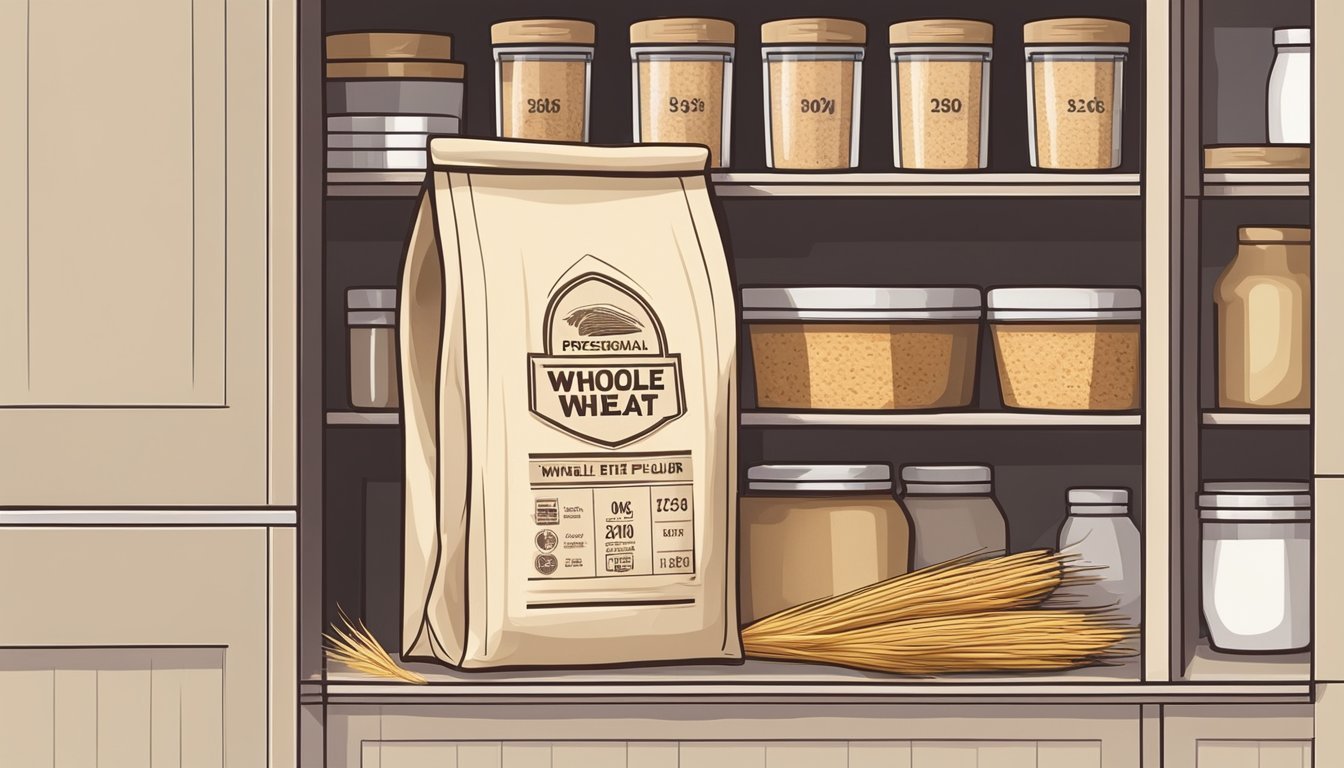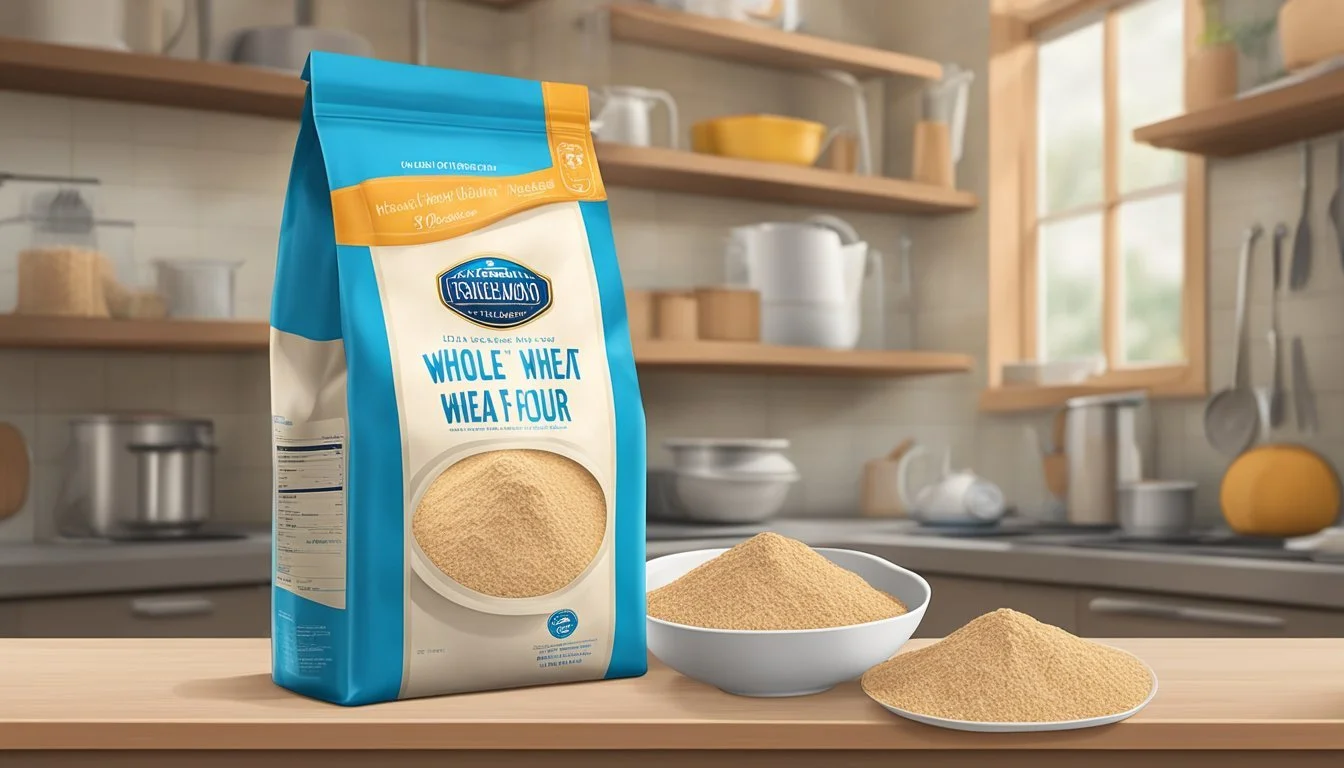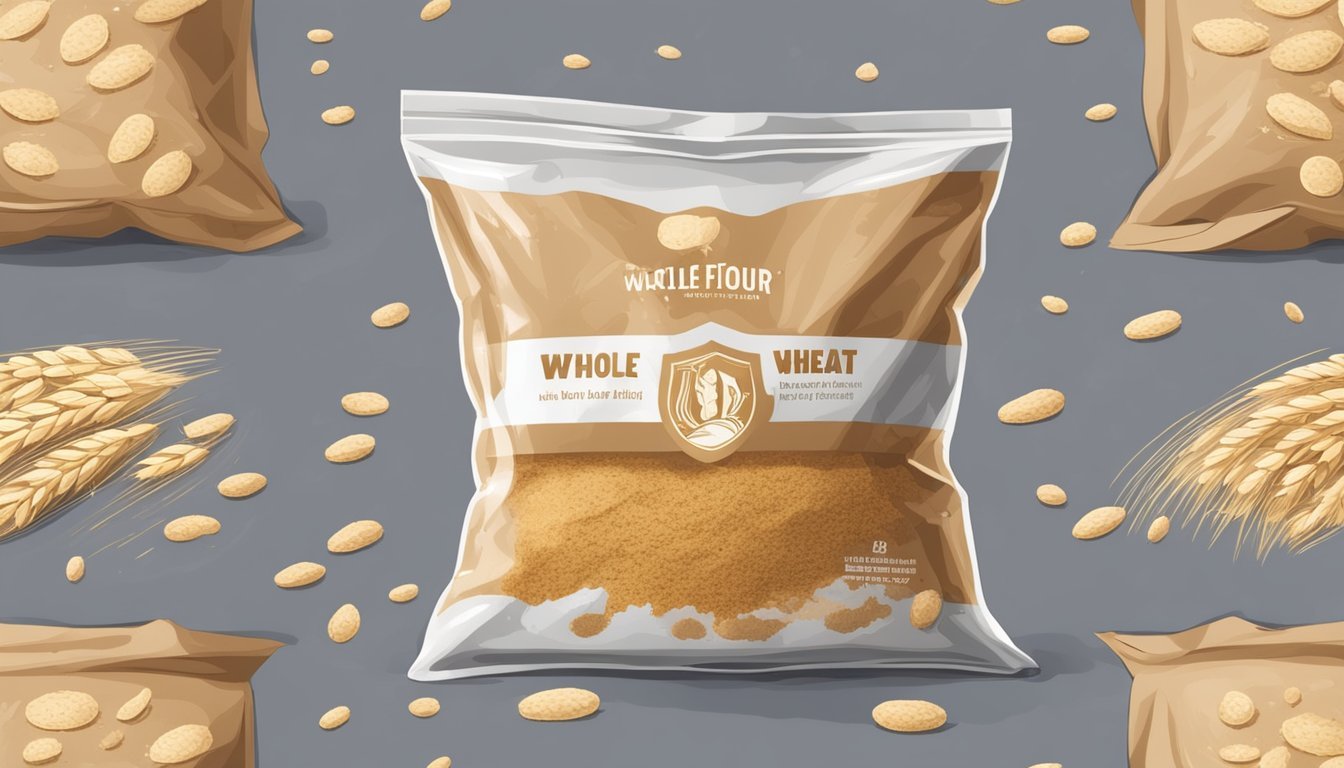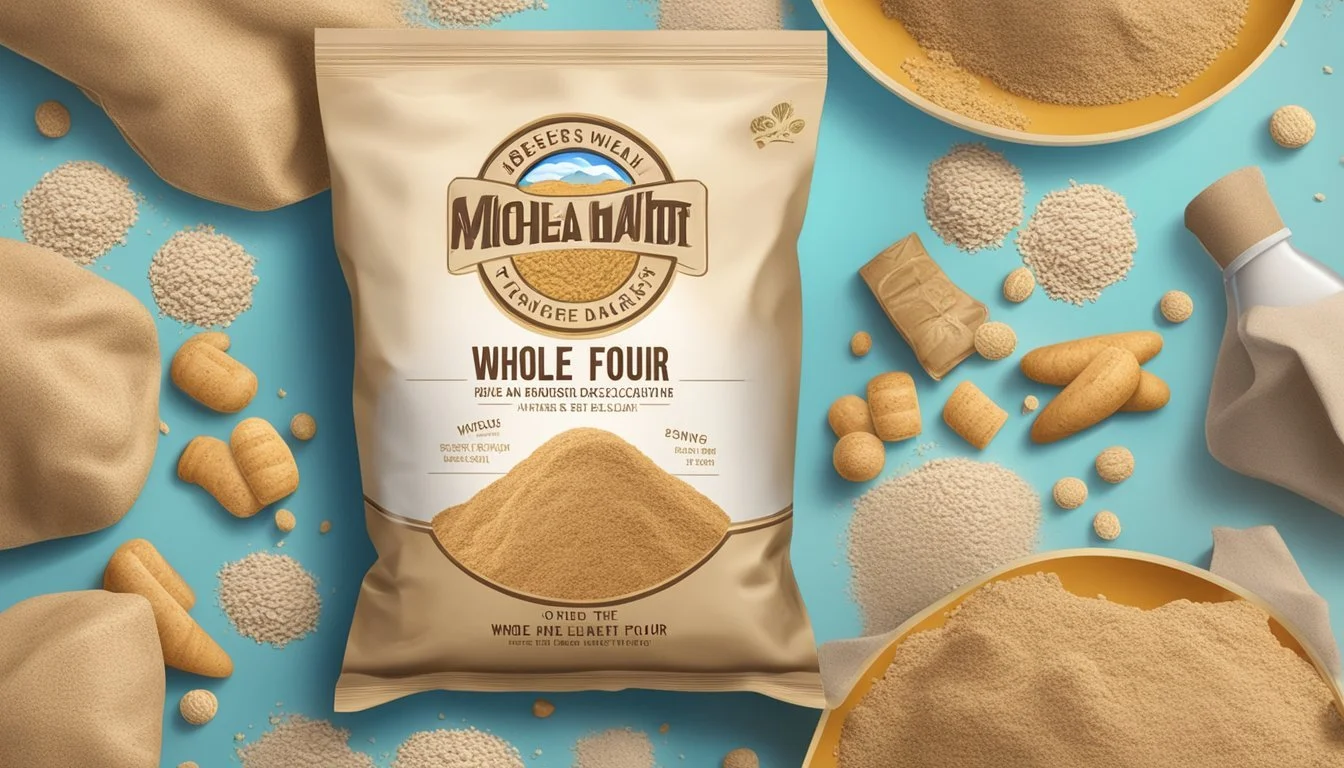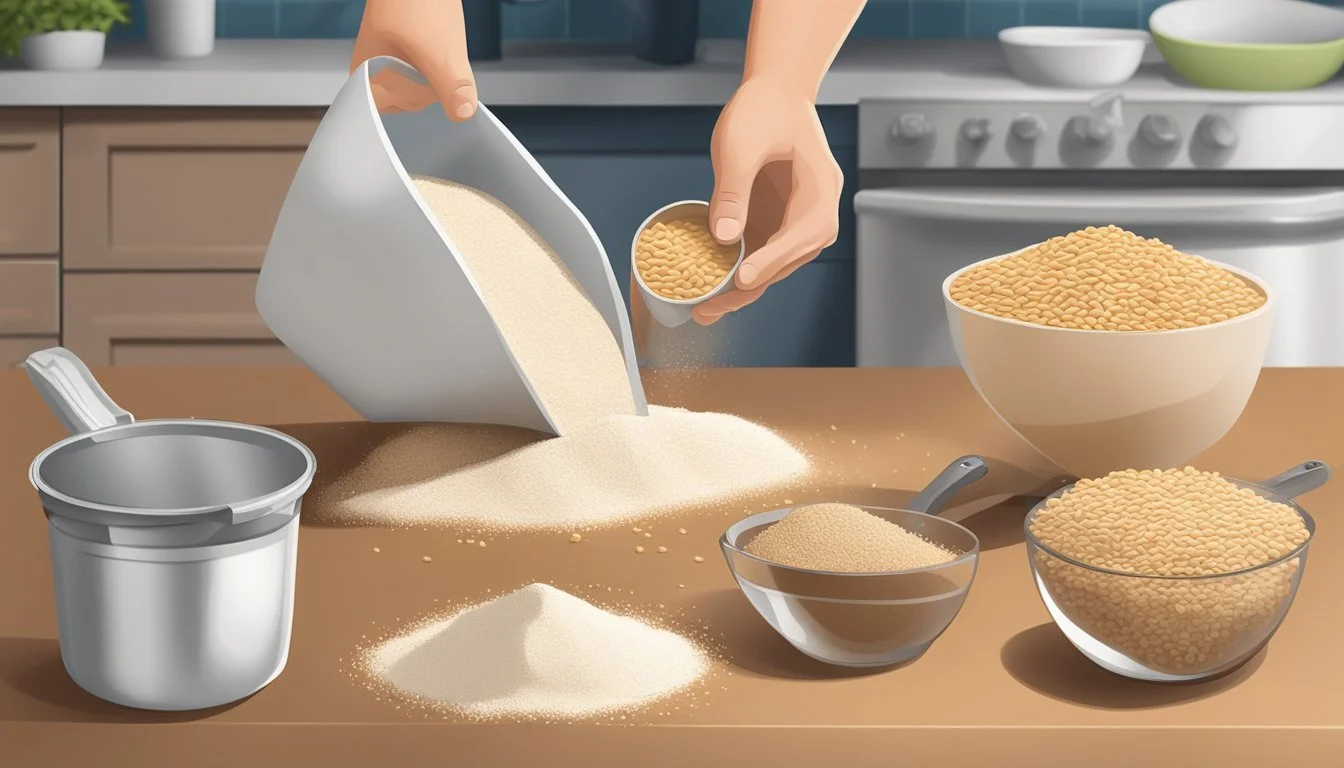Does Whole Wheat Flour Go Bad?
Key Signs and Storage Tips
Whole wheat flour, like other types of flour, has a limited shelf life and can go bad over time. The moisture, heat, and exposure to air can all contribute to its spoilage, impacting its nutritional value and usability. Storing it improperly can lead to the growth of mold and bacteria, making it unsafe for consumption.
Many factors influence the shelf life of whole wheat flour. Typically, it lasts 4-6 months past its printed date when kept at room temperature. For longer storage, placing it in the refrigerator or freezer can significantly extend its usability.
Detecting whether whole wheat flour has gone bad is crucial. A rancid, sour, or musty smell is a clear sign of spoilage, while fresh flour usually has no strong odor. Regular checking and proper storage can help maintain its quality and ensure that your baking ingredients remain fresh.
Understanding Flour and Its Various Types
Flour is a fundamental ingredient in baking and cooking, with various types available to suit specific culinary needs. This section explores different flour varieties and their roles in various recipes.
Differentiating Whole Wheat, White, and Other Flour Varieties
Whole Wheat Flour: Contains the bran, germ, and endosperm, offering more fiber and nutrients. Its oils can go rancid faster than refined flours.
White Flour: Made from only the endosperm, white flour has a longer shelf life and a finer texture. It's suitable for a wide range of recipes.
All-Purpose Flour: Versatile and commonly used, made from a blend of hard and soft wheat, suitable for most baking needs.
Bread Flour: High in protein, giving baked goods a chewy texture. Ideal for yeast bread.
Cake Flour: Low in protein, providing a light and airy texture, perfect for cakes and delicate baked goods.
Self-Rising Flour: Contains added baking powder and salt, used for quick breads and biscuits.
Nut Flours: Like almond and coconut flour, these are gluten-free alternatives. They add unique flavors and textures but require adjustments in recipes.
Whole Grain Flours: Include flours like buckwheat and rye, offering richer flavors and more nutrients compared to refined flours.
The Role of Flour in Baking and Cooking
Flour provides structure to baked goods through gluten formation, which traps air and creates a rise in products like bread.
In cooking, flour is often used as a thickening agent for sauces and gravies. Each type of flour brings distinct properties, influencing texture, flavor, and nutritional content.
Bread Flour: Provides strength and chewiness in bread.
Cake Flour: Creates tender, light cakes due to its low protein content.
Almond and Coconut Flours: Introduce moisture and a nutty profile, often seen in gluten-free recipes.
Understanding the characteristics of each flour type can significantly impact the success and quality of a recipe.
Shelf Life and Expiration Details
Understanding the shelf life of whole wheat flour and how to read labels can help ensure its best use and avoid waste. Flour's usability is not just about dates but also how it is stored.
Reading Labels: Best-by, Sell-by, and Expiration Dates
Flour packages have different types of dates that indicate freshness. Best-by dates suggest the time frame within which the flour is expected to be at its peak quality. After this date, the quality may decline, but it might still be safe to use.
Sell-by dates are geared towards retailers, indicating when the item should be sold to ensure optimal freshness for the consumer. Expiration dates or "use-by" dates imply the end of the period when the flour is safe to use. Keeping an eye on these dates ensures that you use the flour before it potentially goes bad.
How Long Does Flour Last and Factors That Affect It
Whole wheat flour generally has a shorter shelf life compared to white flour. Unopened, it can last up to 6-8 months if stored in a cool, dry place. Once opened, its lifespan reduces significantly to about 2-3 months, due to increased exposure to air and moisture.
Factors influencing the shelf life include storage conditions and the presence of preservatives. Flour should be kept in an airtight container to prevent exposure to air, moisture, and pests. Refrigeration or freezing can extend the shelf life slightly, especially in warm climates.
Keeping whole wheat flour fresh involves paying attention to storage and regularly rotating stock to use the older flour first.
Proper Storage Techniques for Flour
Properly storing flour can significantly extend its shelf life and maintain its quality. Key factors include using airtight containers, controlling temperature and moisture, and selecting appropriate storage locations.
Airtight Containers and Their Significance in Preservation
Airtight containers are essential for preserving flour. These containers prevent exposure to air, which can lead to oxidation and spoilage. Using airtight containers can also protect flour from pests and moisture, both of which can cause the flour to go bad.
Types of Airtight Containers:
Glass Jars: Non-porous, easy to clean.
Plastic Containers: Lightweight, often stackable.
Vacuum-Sealed Bags: Maximize freshness by removing air.
Temperature and Moisture Control for Optimal Storage
Controlling temperature and moisture is crucial. Flour should be stored in a cool, dry place. High temperatures can shorten its shelf life, while moisture can lead to clumping or mold.
Optimal Storage Conditions:
Cool Temperature: Below 70°F (21°C).
Low Humidity: Keep flour dry to prevent spoilage.
Pantry vs. Fridge vs. Freezer Storage Solutions
The choice of storage location depends on how long you need to keep the flour.
Pantry:
Best for short-term storage.
Suitable for white flour, lasting up to a year.
Store in a dark, cool, dry place.
Fridge:
Extends shelf life up to six months.
Good for whole wheat and nut flours.
Ensure it’s in an airtight container to avoid moisture.
Freezer:
Ideal for long-term storage.
Flour can be stored for up to a year.
Use freezer-safe, airtight containers to prevent freezer burn.
Effective storage is crucial for maintaining the quality and safety of flour. By controlling exposure to air, temperature, and moisture, the shelf life of flour can be considerably enhanced.
Signs of Flour Spoilage
Determining whether whole wheat flour has gone bad involves observing changes in its smell, texture, and color. Another concern includes identifying mold or insect infestations which can compromise food safety.
Identifying Changes in Smell, Texture, and Color
Spoilage of whole wheat flour can often be detected through changes in its smell. Fresh flour typically has no odor or a slight nutty scent. When it turns rancid, it emits an unpleasant, sour, or musty odor.
Texture changes are another key indicator. Good flour is smooth, while spoiled flour feels crumbly or hard, suggesting oil deterioration within the flour. Color changes can also signify spoilage. Fresh whole wheat flour has a light tan hue. Darkening of the flour hints at deterioration and potential rancidity.
The Implications of Mold and Insect Infestation
Mold growth on flour is a clear sign of spoilage and should never be used. Mold thrives in moist environments. It appears as green, black, or white spots and renders the flour unusable.
Insect infestations, particularly from weevils, are another sign of bad flour. Small bugs or tiny holes in the packaging indicate the presence of weevils or other pests. These critters not only ruin the flour but also pose food safety risks by contaminating it with bacteria and waste.
Health and Safety Concerns
Health and safety are significant when dealing with whole wheat flour. It is crucial to distinguish between fresh and rancid flour and understand the potential health issues if spoiled flour is used.
Recognizing Rancid Flour and Its Health Impacts
Whole wheat flour contains higher oil content due to its germ and bran layers, making it prone to rancidity. Identifying rancid flour involves observing changes in smell, color, and texture. A strong, musty smell, or an off taste indicates rancidity. Visually, it may appear discolored, shifting from its natural tan or brownish tint.
Consumption of rancid flour can lead to digestive discomfort due to oxidative damage. Rancid oils form harmful free radicals, affecting overall health. It is advised to discard rancid flour to avoid potential health risks.
Mycotoxins and Bacteria: Health Effects of Spoiled Flour
Whole wheat flour can also attract moisture, leading to mold growth and mycotoxin production. Mycotoxins are toxic compounds produced by certain molds, posing severe health risks. Signs of mold include visible patches and a musty odor.
Additionally, high humidity can encourage bacterial growth. Spoiled flour may harbor bacteria such as Bacillus cereus, causing foodborne illnesses. Symptoms include nausea, vomiting, and cramps.
Proper storage is essential to prevent these issues. Storing flour in airtight containers in a cool, dry place, or refrigeration, can extend its shelf life and reduce health risks.
Enhancing Flour Longevity
Proper storage techniques and the use of preservatives can significantly extend the shelf life of whole wheat flour. Freshness is key, and preventing exposure to moisture, heat, and oxygen are primary measures.
Freezing Techniques and Their Benefits
Freezing whole wheat flour is an effective method for prolonging its freshness. By storing the flour in airtight containers and placing it in the freezer, the growth of mold and bacteria is inhibited. This process helps maintain the flour's nutritional value and baking properties. The cold environment slows down the oxidation of the oils present in whole wheat flour, preventing rancidity.
A practical tip is to freeze flour in smaller portions, making it easier to use without defrosting the entire batch. Properly sealed bags or vacuum-sealed containers are ideal as they minimize the entry of air and moisture. These steps effectively block oxygen, a key factor in spoilage.
The Role of Preservatives in Extending Shelf Life
Preservatives can also play a vital role in extending the shelf life of whole wheat flour. Natural preservatives such as vitamin E (tocopherols) can be added to the flour to inhibit the oxidation of fats. This addition keeps the flour fresher for longer periods, protecting it from going rancid.
Chemical preservatives might also be used in commercial settings. These additives, while effective, should be carefully considered due to potential health concerns. Maintaining an optimal storage environment with controlled temperature and humidity is crucial even when preservatives are used.
When using any preservatives, always check for any changes or reactions that might indicate spoilage. Combining freezing techniques with the right type of preservatives offers a dual approach to ensuring the flour remains usable and nutritious for an extended period.
Tips for Bakers and Home Cooks
When working with whole wheat flour, selecting the appropriate type and knowing how to adjust recipes if the flour is expired can significantly impact your baking outcomes. Proper flour selection and recipe adjustments ensure the best texture and taste for your baked goods.
Selecting the Right Flour Type for Your Recipe
Choosing the right flour is crucial. For dense baked goods like breads or cookies, whole wheat flour works well due to its higher protein content. For lighter textures, like cakes, cake flour is ideal as it has lower protein, yielding softer, more tender results.
White whole wheat flour offers a milder flavor and can be substituted for regular whole wheat in equal measures without compromising taste or texture.
When selecting flour, always check the expiration date. Fresh flour has better baking properties and flavor.
Adjusting Recipes When Using Expired Flour
Expired flour can still be used in some cases but with adjustments. Check for rancidity; if the flour smells sour or musty, discard it. If it passes the sniff test but is past its prime, enhance recipes by adding a bit more leavening agent like baking powder.
Expired flour may have reduced gluten strength, affecting the structure of baked goods. Compensate by incorporating ingredients that improve structure, such as eggs. For recipes requiring a fine texture, such as cakes, sieve the flour to improve its airiness.
To ensure safety, consider using expired flour for non-critical recipes like flat cookies, where texture is less affected. Always store flour in an airtight container to extend its shelf life.

